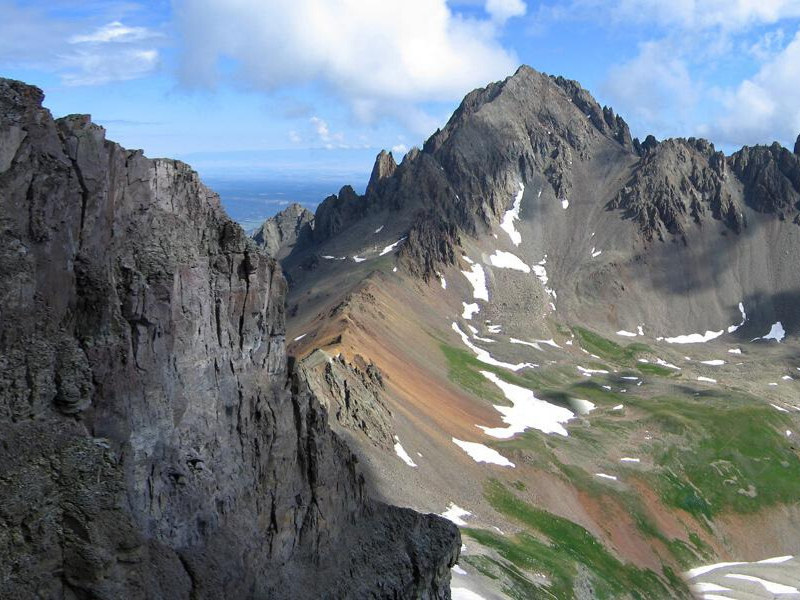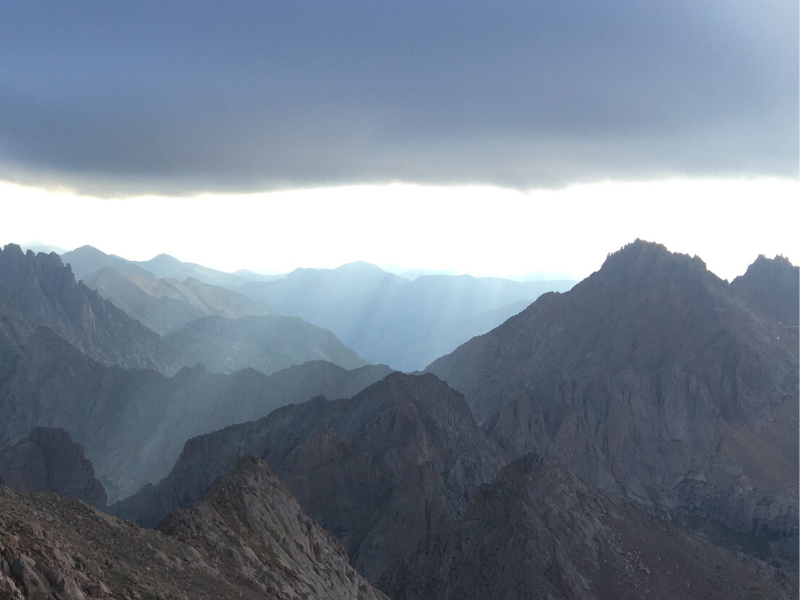5 Tips for Climbing 14ers
Climbing the 54 peaks in Colorado taller than 14,000′ has become a very popular activity, and for good reason. It’s a great way to get into the mountains and see all of what Colorado has to offer! Each peak has it’s own challenges and working your way through the list is a great way to branch out into parts of the range you might not otherwise. We put together a short list of tips for planning your summit attempts below. If you’d like more information don’t hesitate to give us a call!
Tip #1: Check the Conditions & Weather
Make sure you check the current mountain conditions and weather forecast prior to your climb. Snow often lingers in the high mountains until mid-July, making crampons and ice axe necessary. Many unsuspecting climbers are surprised by the amount of late season snow each year. Also, check the weather to make sure there are no thunderstorms forecasted to move through the area during your climb. High points in the terrain naturally attract lightning. Choose a day that has a forecast for clear, calm weather.
Tip #2: Bring the Right Gear
During the months of May, June, and July it is often necessary to have sturdy boots, crampons, and ice axe for certain climbs. When snow free, lightweight hiking shoes or comfortable sneakers will do. Other essentials include rain jacket, first aid kit, plenty of food, several liters of water, sunscreen (the sun is strong at 14K!), sunglasses, and a helmet. That’s right, bring a climbing helmet. The rockfall potential on many 14ers is serious and it is exacerbated when there are other climbers moving above you. Finally, make sure you have reliable communication throughout the climb. A satellite device such as an InReach or Spot is highly recommended. A cell phone will on the summit of many peaks and can be a good time to check in with someone who knows your plan and let the know the time you start descending.
Tip #3: Start Early
Climbing peaks can be a big day and it is a good idea to give yourself plenty of time. How long does the average climb take? There are too many factors to even begin to make an estimate of an average here. It is possible to do research on the times of other parties and get an idea for what the day will entail. If there is a chance of afternoon thunderstorms, which is almost a certainty in mid to late-summer, it is a good idea to be back at the car by 12:00 noon.
Tip #4: Be Prepared for Exposure
Climbing 14ers involves scrambling along a fairly exposed ridge crests and alpine faces. Most routes are class 3 or easier which is not hard by technical climbing standards, but the exposure is for real and a fall would have high consequences. Certain peaks require exposed 4th class climbing that some climbers will choose to rope up for. Whether you choose to rope up or not, be prepared for some airy sections on many routes.
Tip #5: Climb with a Partner
Climbing with a partner has numerous benefits. You can compare opinions about the weather, give each other encouragement, and be there to help if something goes wrong. Having a partner opens up the option to rope up for certain sections of notoriously difficult and exposed routes. And if you’re lucky, your partner will bring chocolate. . . and share it.
If you would like to learn more about our guided climbs of 14ers in Colorado, please get in touch!
Contact Us
Mountain Trip
135 W Colorado Ave 2A | Telluride, C0 81435

